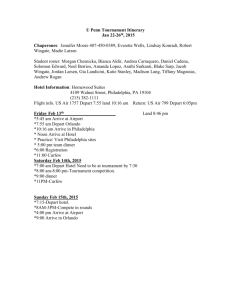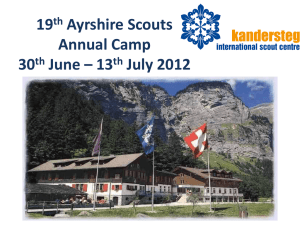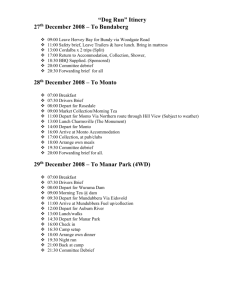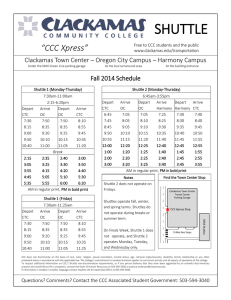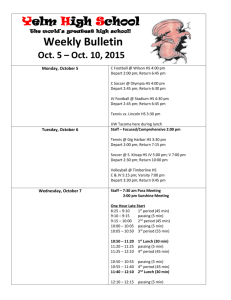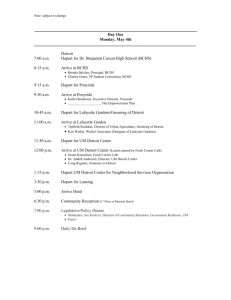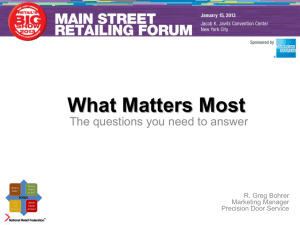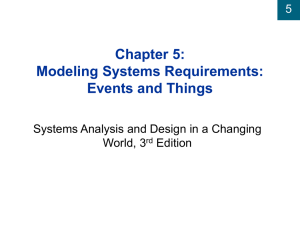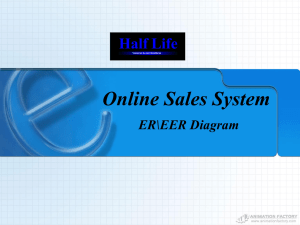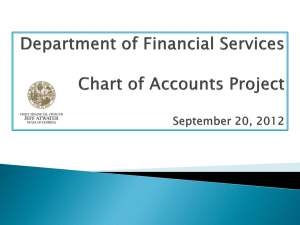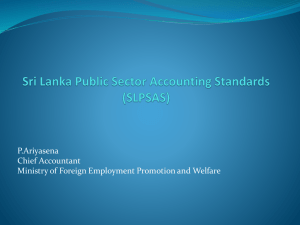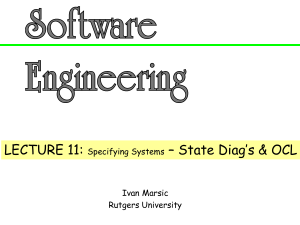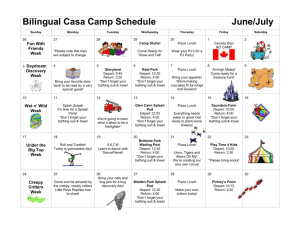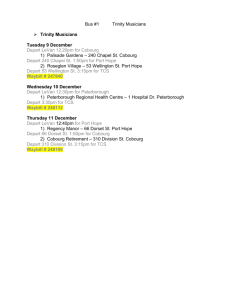Learning Simio - the PASI 2013 website!
advertisement
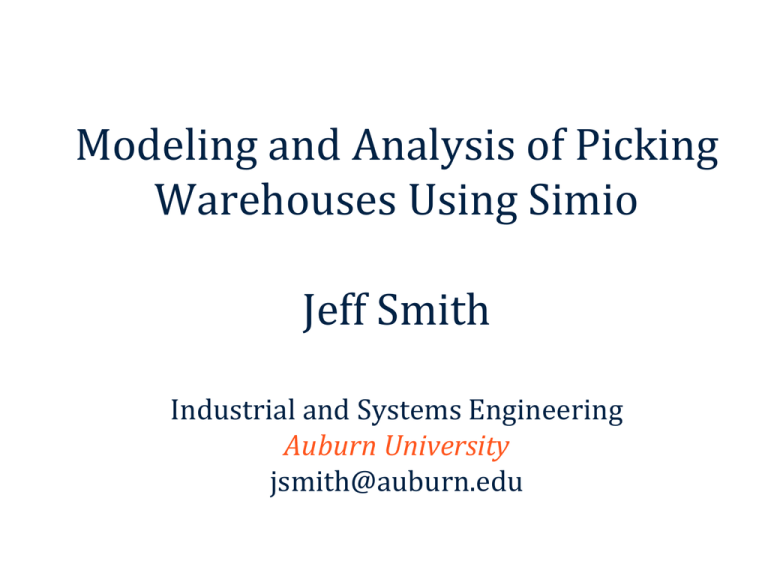
Modeling and Analysis of Picking Warehouses Using Simio Jeff Smith Industrial and Systems Engineering Auburn University jsmith@auburn.edu Simio Learning Resources • Videos (http://www.simio.com/videos) • Publications – Introduction to Simio (Included PDF and downloadable seven-part video series) – Joines, J.A. and Roberts, S.D., Simulation Modeling with SIMIO: A Workbook – Kelton, W.D., J.S. Smith, and D.T. Sturrock Simio & Simulation: Modeling, Analysis, Applications Key Simio Object Concepts Object: Defines data, logic, behavior, view, events, and interaction with other objects. Model: An object that is executable. Project: A collection of models/objects. A project can be loaded as a library. Properties: Static inputs to an object. States: Changeable values associated with an object Events: Supports communication between objects. Fired when key things happen. Resource: Constrains the system. Any object (even an entity) may be a resource. Entity: A dynamic object that may move through system Transporter: An entity that can “work on” or carry other entities. Vehicles and Workers are entities (and resources). Simio User Interface • • • • • • Files Menu Ribbons Project Tabs Libraries Project Current Model • Properties • Facility View Standard Library Source: Generate entities of a specified type and arrival pattern. Sink: Destroy entities. Server: Capacitated process, such as a machine. Workstation: Capacitated process, includes setup, process, tear-down. Combiner: Batches entities with a parent entity (e.g., pallet). Separator: Splits batches or copies entities. Resource: Seized/Released by objects. Vehicle: Fixed route or on-demand pickups/drop-offs. Worker: Moveable resource, for stationary and non-stationary tasks. BasicNode: Simple intersection, fixed object input. TransferNode: Change destination/get rides, fixed object output. Connector: Zero travel time. Path: Entities independently move at their own speeds. TimePath: Entities complete travel in a specified time. Conveyor: Accumulating/non-accumulating conveyor devices. Simple Flow Line Arrive Server 1 Server 2 Depart Object Hierarchy - The Family of “Objects” Object Instance Object Definition Object Runspace (Realization) Simple Flow Line - Details Arrive Server 2 Server 1 Tandem Queueing Model Arrival Rate Mean IAT Mean IAT Service Rate Mean ST Mean ST r L W 25.00 entities/hr 0.04 hr 2.40 min Server 1 30.00 0.03 2.00 0.83 5.00 0.20 Server 2 35.00 entities/hr 0.03 hr 1.71 min 0.71 2.50 7.50 entities 0.10 0.30 hrs Depart Editing Object Properties • • • • Displayed in Properties Window Defined by object builder Integers, Booleans, rules, expressions, … Expression editor (down arrow at right): “Top 10” Expressions • X (a number – integer or real) • Random.Exponential(mean) • Random.Triangular(min, mode, max) • Random.Uniform(min, max) • • • • • • ServerName.Capacity.ScheduledUtilization ServerName.InputBuffer.Contents DefaultEntity.Population.TimeInSystem.Average DefaultEntity.Population.NumberInSystem.Average SinkName.InputBuffer.NumberEntered SinkName.TimeInSystem.Average Simple Flow Line – Expressions • Source1 – Interarrival Time: Random.Exponential(2.4) • Server1 – Processing Time: Random.Exponential(2) • Server2 – Processing Time: Random.Exponential(1.7) Simple Flow Line - Experiment Arrive Server 1 Server 2 Depart Simple Flow Line – Responses Arrive Server 1 Server 2 Depart Simple Flow Line – SMORE Plots Arrive Server 1 Server 2 Depart Simple Flow Line – Throughput Response Arrive Server 1 Server 2 Depart Buffers and Referenced Properties Arrive Server 1 Server 2 Depart Buffers and Referenced Properties Arrive Server 1 Server 2 Depart Buffers and Referenced Properties Arrive Server 1 Server 2 Depart Simple Picking Warehouse • Pickers – Walk speed: 1 meter/sec – Pick time: Uniform(10, 20) sec – Pack time: Triangular(.5, 2, 3.5) min • Fork Lift – Travel speed: 1.5 meters/sec – Load time: Uniform(5, 10) sec – Unload time: Uniform(20, 30) sec Racks 45 m 30 pick positions in each rack (approximate using 15 evenly spaced locations) Decisions: • Number of pickers • Number of pack stations • Number of forklifts
